How Does Ad Revenue Work On Apps
ThinkMobiles is one of most trusted companies conducting IT & software reviews since 2011. Our mission is to provide best reviews, analysis, user feedback and vendor profiles. Learn more about review process.
How do free apps make money? During the recent times we've been getting quite a lot of questions about the hottest topic on the app market. Well, it's time to reveal the truth behind app monetization magic.
As free applications definitely outmaneuver the paid ones (considering download numbers), the main thing here is to find out how to capitalize on those new users, for example through app data monetization. With no further adue, let's unveil the main advantages of creating free apps and the most efficient app monetization strategies.
How to make money with free apps
Key app monetization strategies include:
- Advertising: interstitial, video, native, incentives, display ads and banners
- Email marketing
- Sponsorship
- Subscriptions
- In-app purchases
- Freemium upsell
- Amazon Underground
- Physical purchases and merchandise
- Collecting and selling data
- Affiliate income and referral marketing (from CPA to CPI)
Best tools to monetize free apps:
- In-app advertising tools
- In-app advertising for game applications
- Freemium model of app monetization
- In-app video advertising
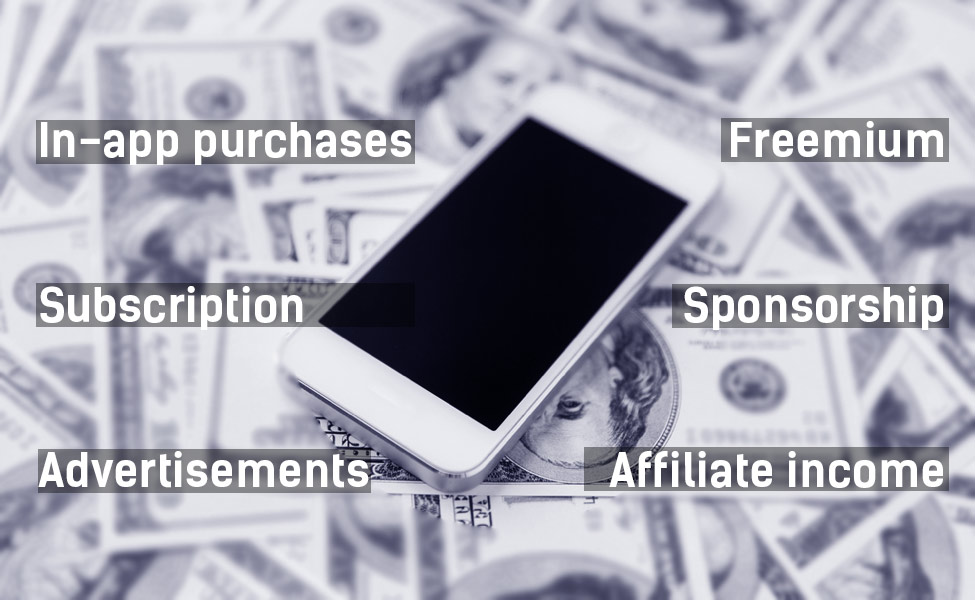
The App Market overview
The global app economy is large and it's going to keep growing. As of 2016, there were more than 2 million applications in Apple' App Store and 2.4 million in Google' Play Market, making it the most popular distribution platform in the world. It is projected that revenues generated from mobile apps, including advertisements and in-app purchases, will double by 2020. By the way, you may check our research about how much does it cost to build an app.
Taking into account that tablet and mobile device usage has reached unprecedented records, it is the right time for your business to have the own app if you don't have one. But what app type should you choose? How can you get revenue from free apps? Let's have a closer look at mobile app market.
Paid vs Free Apps
According to TechCrunch, more that 90% of apps on the market now are free. Revenues generated from apps like Uber, that charge for download are expected to go down in incoming years. Statista presents past view and future forecast for free and paid app market from 2012 to 2017.
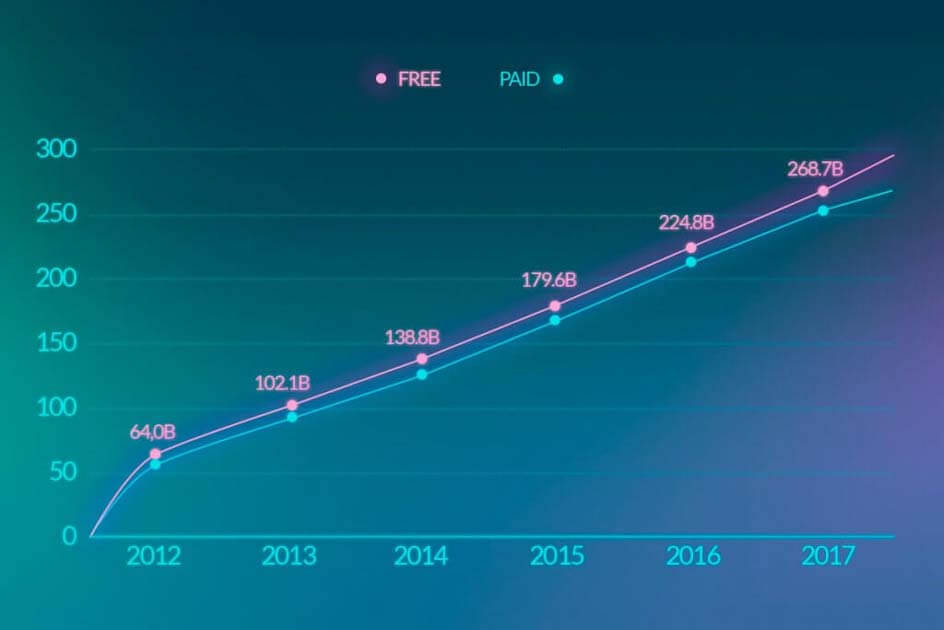
In fact, statistics show that the amount of paid app downloads decreased greatly in 2016 compared to previous years. Gartner Research group revealed a report, according to which customers will spend 24% more on in-app purchases than on paid-for apps, indicating that people are likely to generate transactions within the app and pay for in-app features, once they are convinced that the app can bring real value.
Overall, the survey conducted in China, the U.S. and the U.K. showed that spending for 3 month period on paid apps amounted $7.40 and $9.20 to buy in-app features. What is more, Gartner said that app users between 18 and 34 years enjoyed more flexible engagement with in-app transactions, that older customers, preferring to pay for an application to own and use.
The survey results suggest that app developers should provide users with a range of options for in-app transactions and upgrades for extended features. While we're talking about this side of things, check out the cost of hiring Android developers.
During the previous year, the most popular free app revenue stream was advertising, but it also was the most annoying (to users). About 20% of surveyed users indicate that they usually click on ads generated by mobile apps, but almost two-thirds said they never click on in-app commercial. Still, 63% of developers choose advertising to monetize their apps, making this model the major revenue-earner in 2016, In-Mobi report.

So there are some significant gaps between how app developers and users view the value of channels to generate revenue. That's why app publishers should consider a mix of strategies to deliver extra value not only through ads and in-app transactions but provide users with new experience and channels of interaction, ability to purchase additional features if desired.
How do free apps make money?
With the study on mobile app development stages in mind, let's analyze the main revenue models for free apps:
Advertising
Mobile advertising remains the most profitable app revenue model. 7 out of 10 app providers used it in 2016, 18% plan to use it in the near future. Using ads to monetize app is quite simple, all required is to display commercial inside your mobile apps and get paid from the ad networks.
See also "How free games are designed to make money". This video offers a great illustration about the most successful strategies of app monetization. Let's explore!
According to Sweetpricing report, 32.5% of the largest mobile providers use in-app ads as the only source of in-app revenue. You can get paid every time the ad is displayed (per impression), per click on an ad, or when a user installs the advertised app (per install).
Native, banner and interstitial ads are the top 3 formats used by developers for their inventory monetizing.
-
Interstitial ads
are the full-screen pop-ups, displayed at specific time frames.The add can be closed by opening the promoted page or by a close button in the ad corner. This method to boost app revenue is efficient at natural transition breaks mostly for messaging and content apps, news, and for games, before or after an expected content or functionality (eg. game levels) and can be used to maximize impressions.
-
usually appeared in different sizes and stretch at the top or bottom part of the screen. They are small and less obtrusive so users can freely interact with the app. Besides, app developers can target tailored users based on demographics and past behaviors. Still, they have low engagement rates of about 0.1% CTR.
A study by Medialets illustrated top performing banners by position and size, indicating that the lower half of the app is the most effective at driving the conversation. Apps like Tinder and Uber are a great example of this notion.
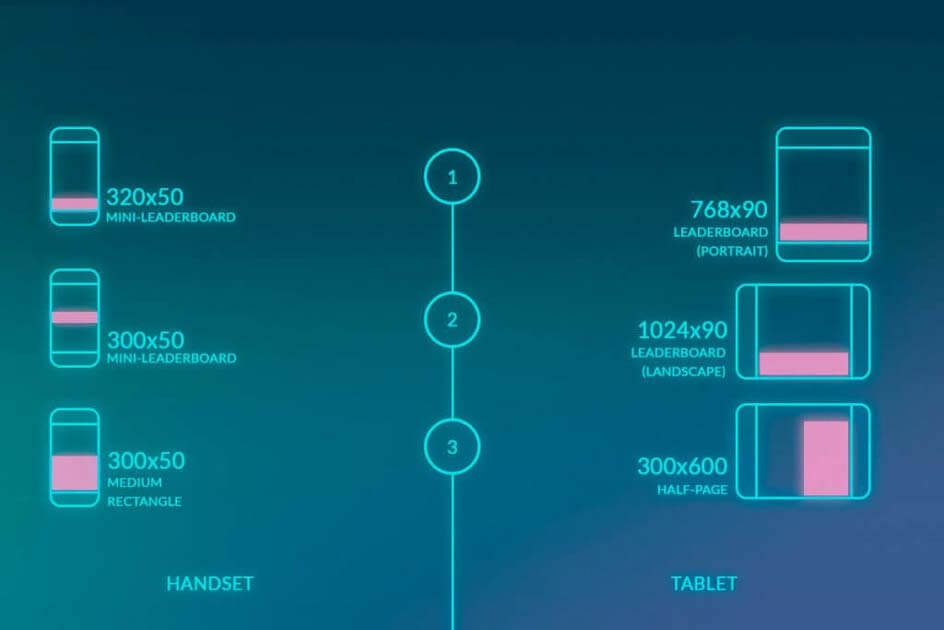
-
In-app video ads
are displayed automatically, or used as a 'rewarded video' – opened on-demand in exchange for any in-app reward. For instance, the user can get app currency, extra lives in games or additional features for watching video add. This is a win-win strategy both for app providers and customers.
-
Native ads
are created to fit seamlessly the main concept design and appear within the app as its natural element. Mostly, it manifests as sponsored content or video, aimed to promote a product. As native advertising are considered by users to be as less irritating and intrusive, they get more popular revenue stream for app providers.
Using a mix of ad formats and placement can generate maximum revenue to developers and engagement to users.
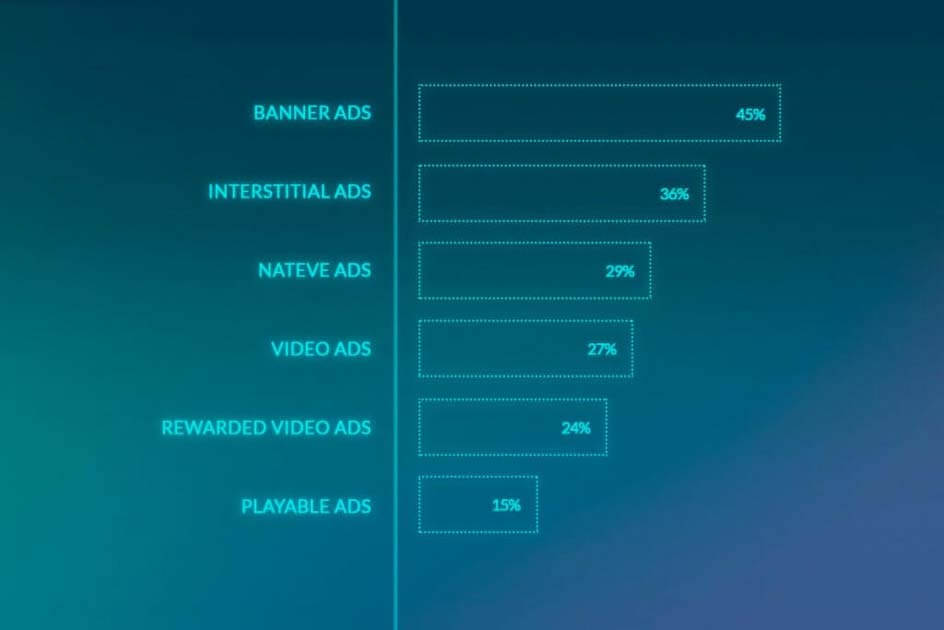
Downside: Ad revenues can be pretty low for apps with a small audience. Despite advertisement is wide used by developers, it remains the most hated by users, so it should become a part of the interaction and act as its natural part.
- Incentivized Ads (reward users for app engagement)
84% of app users prefer rewards apps over applications containing ads. There is a number of tools that allow rewarding consumers on completion of a certain in-app action, ad interaction, through filling out a survey. The strategy allows creating better engagement and building positive brand attitude. App developers get revenue from promoting their in-app currency by sponsors and gain happy and loyal users.
91% of users interacting with incentivized ads actively pay attention to the brand behind it. RunKeeper is a pioneer in using this revenue model.The app for tracking running activity and workouts uses incentivized ads, giving an ability for users to unlock exclusive rewards and features without disrupting engagement with display and interstitial ads.
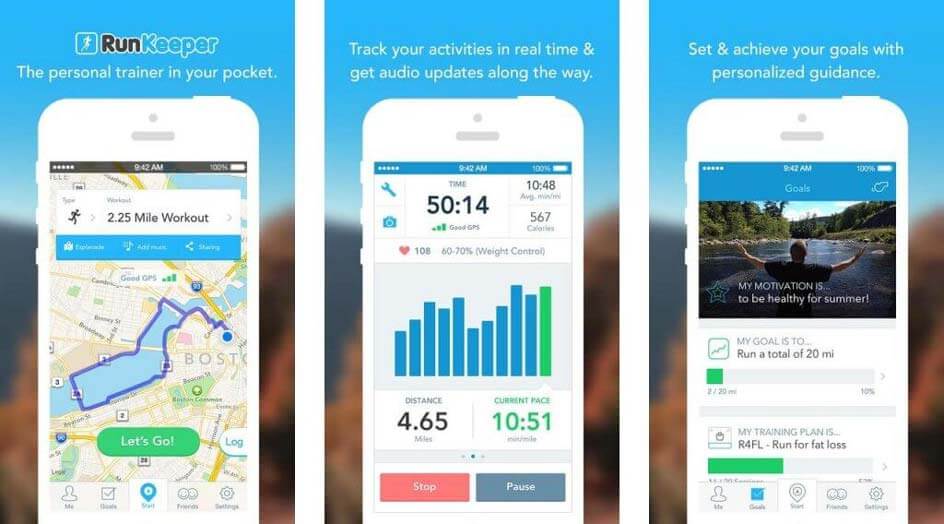
Downside: Rewards should look like a part of app interaction and it is hard to keep users involved in the app.
Email Marketing
Despite the fact that Email Marketing is comparatively old technique, it can be quite powerful when it comes to monetizing apps. This strategy works best when you kindly ask user email during sign-in. And, as a result, get a possibility to consequently reach them with email notifications.
At the meantime, mobile applications offer a new opportunity to collect email addresses. This makes email marketing one of the most effective strategies on the web, which also has its pros and cons.
So here are few ways to collect email address from within a mobile app:
- The first and the foremost way is to simply ask users for their email address with a pop-up box. In return for free features, in-app currency, or whatever you want to offer, it becomes profitable for both sides.
- Another way of getting users emails goes through Facebook SDK. Having FB login enabled inside the app lets you use it for collecting email addresses. Don't forget to notify your users that they may get emails, in case of logging in with FB account.
- Or… use some third-party tools to make email collection easier. There are some 3rd party SDK's that can be integrated into your mobile app (by adding just a few lines of code to your app). Simple and effective, isn't it?
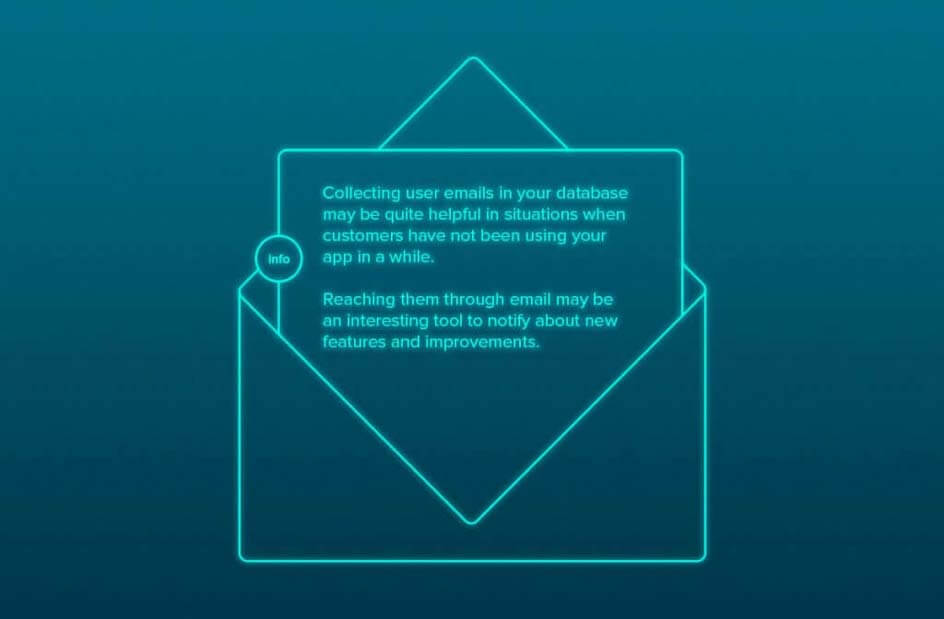
Collecting user emails in your database may be quite helpful in situations when customers have not been using your app for a while. Reaching them through email may be an interesting tool to notify about new features and improvements.
Downside: Email marketing is widely underused on the Internet. Meanwhile, most of the giants are taking advantage, it is not efficient for most of the smaller players.
Sponsorship placement within the application can be a powerful app monetization model if provider builds the right niche app for tailored users and launch it on behalf of another company. The main challenge is to find a funder with similar or the same target audience and white label an app or adapt its design to match sponsor's brand.
The main types of sponsorship deals:
- Agreed revenue split generated by the app.
- Monthly sponsorship fee paid by funder for app maintenance or use.
The strategy is also lucrative for developers to generate and expand user audience and promote an app, as most sponsors already have good website traffic and loyal customers.
A great example is Home Depot sponsorship on the Weather Channel app. The animated app background behind the temperature measurement is the advertisement placed by the sponsor, well-aligned with Home Depot's target users – homeowners interested in weatherproofing their houses.
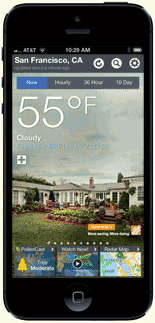
Downside: It is difficult to find sponsor company and present app for a specific area.
Subscriptions
For free apps with restricted content or features available for a limited time, the user can pay a subscription fee to get a full access and unlock it. This revenue type is often used for cloud services, video and audio streaming, online newspapers or magazines. The developer can provide users with free trial period and charge the subscription fee for an access without restrictions.
According to Sweet Pricing report, only 5% of most successful apps are using subscriptions, making it one of the least used monetization models among developers. Only 5% of successful developers are using subscriptions to monetize their mobile apps.
Google and Apple provide an ability to handle the subscription transactions through their platforms, making easier for developers to implement it. Apple takes 30% for the first year of any subscription, and then 15% after one year of paid service. Google introduces better terms, taking 15% of subscription revenue even during the first year.
The revenue model was successfully used by Umano app for voiced articles. Umano provides users with a limited number podcasts for a fixed amount of time until they subscribe for a premium account. The leading paper apps New York Times and Wall Street Journal have acquired 1 million of online subscribers each.
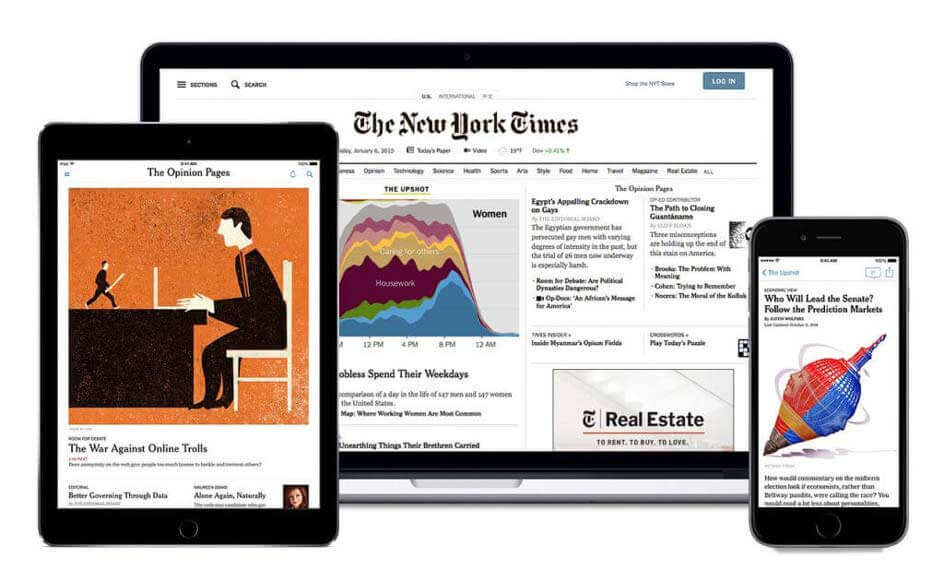
Downside: App developers should constantly provide valuable content and services to guarantee subscription, besides it is hard to decide the best time and location to place paywalls. The model is also suited for tailored verticals as entertainment app, news, and lifestyle.
In-app purchases
In-app purchases provide an ability to sell a variety of virtual items directly from your app — including extra bonuses, premium content, game currency, and goods or unlock game levels.
The strategy falls into categories:
- Consumable – a product that can be purchased and used once within the app. Example: virtual currencies.
- Non-consumable – a featuring product bought for permanent usage, that does not expire. Example: new game levels or maps.
- Subscriptions are used to unlock features and content for a limited period. Example: annual news subscription.
50% of the leading apps use in-app purchases a stream of earnings, and the model is expected to dominate in the next years. It is commonly preferred among game developers, mostly due to digital money, used by users to purchase in-app content or to unlock new levels. That is more, half of the games provide more than one virtual currency- 'coins', 'gems' or 'gold'.
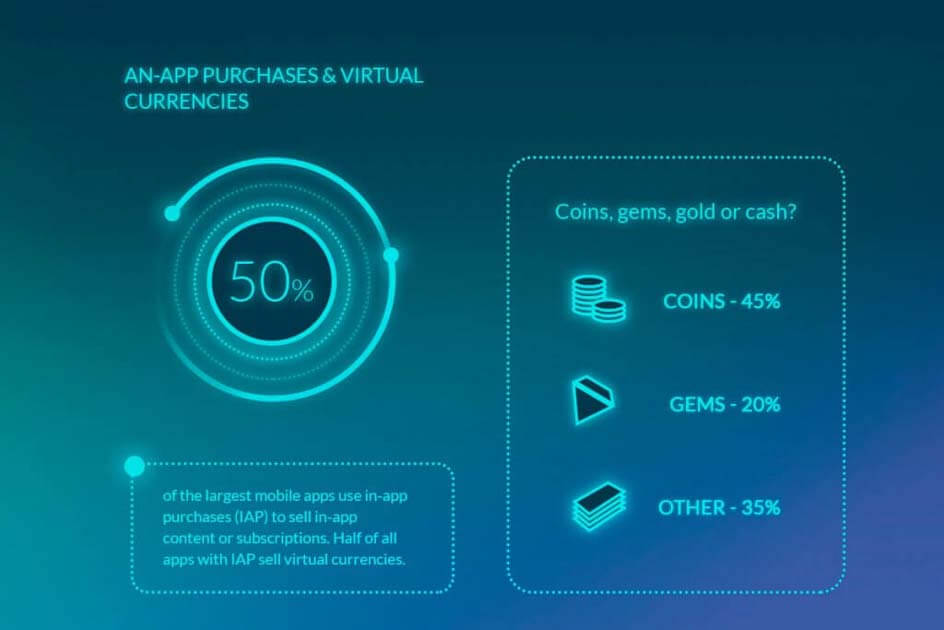
Used wisely, in-app purchases can generate a good revenue – the mobile game developer Supercell boasted to earn $1 million a day on purchases in their Clash of Clans game. Pokemon Go users spend about $1.5 million on in-app purchases daily. Pokemon Go users spend $1.5 million a day on in-app purchases.
Downside: The app should hold leading market positions and always keep users hooked. The model also provides more technical challenges as it requires payment system, such as PayPal, and presupposes additional fee for the payment-holding company.
Freemium Upsell
Freemium apps are provided free of charge but contain paid or premium features, accessed through in-app purchases. The users download free app version and if the content is worth paying, get a full access to functionality by committing a purchase. It is a great way to gain new users at a faster rate, as premium features are optional.
Technically, it is the easiest revenue model for app publishers, as it requires the creation of two apps versions – light and full one. 15% of apps are still using paid sister apps, that contain exclusive functionality which can be bought in addition to all functionality and content of its free version. This strategy is popular among training and educational apps. LinguaLeo utilizes this model – the application has free and paid English lessons, providing premium subscription mode.
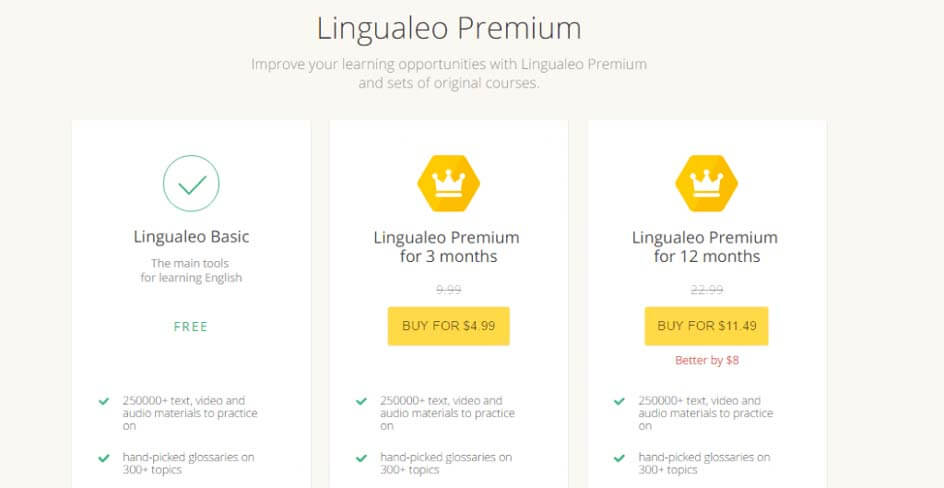
Downside: Users can decide to use only a free version, it is hard to convince to buy additional features. App publishers should provide users with the right amount of free features, just to create proper app experience.
Amazon Underground
One of the comparatively new ways of making money through Amazon App Store is Amazon Underground. Although it does not require ads or in-app purchases, let's see how it works.
Being a relative newcomer in the word of the mobile apps, Underground offers its users to access an unlimited number of solutions that contains premium features for free. Instead, Amazon Underground pays application devs 2 cents per minute of use, per every single user.
Amazon Underground is an independent app store, with it's own mobile app that has to be used for getting access into the store. To use this innovative strategy, app publishers are not allowed to implement ad or in-app purchases inside their apps.
In case you are using in-app purchases in your app, you agree to forgo those fees through listing on Amazon Underground. That means users are offered to 'buy for free' an unlimited number of your IAP's, meanwhile developers are being paid directly by Amazon. Amazon also provides developers with free Revenue Forecasting Calculator to forecast their potential income.
The platform turned to be very effective. A great example is Goat Simulator – one of the top-30 paid apps, that costs $4,99 and has been downloaded over million times in Google Play store. Still, app publisher reported, that Goat Simulator earnings on Underground have outperformed its Google Play app version by 30%.
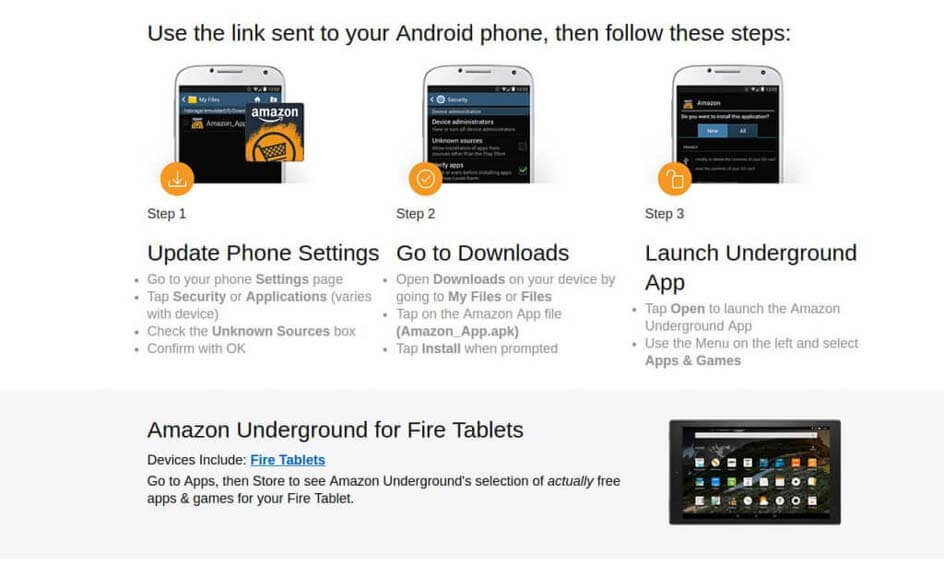
Downside: If your app has a comparatively short average session length, this might be not the most efficient app monetization strategy (contrary to in-app purchases and ads). Meanwhile, this revenue type is good for those, who didn't succeed with in-app purchases but have high app session length and bring real value to users.
Physical purchases and Merchandise
E-commerce businesses use free apps for selling physical goods or branded merchandise: toys, t-shirts, cell phone cases, etc. via email marketing or specially developed applications. One of the first and most successful apps to boost revenue from branded merchandise was Angry Birds game. Rovio Company sells 1 million branded t-shirts, backpacks, and stickers every month. That is more, they managed to get 1 million per month revenue only on plush toys.
Amazon provides an ability to get revenue from merchandise by creating a Merch self-service program that allows app publishers to sell custom branded t-shirts from within their apps. All you need is to create and upload own artwork and promote it using the Amazon tools. Branded t-shirts will be produced, sold by Amazon and you get your revenue share. App developers don't handle any payments and fulfillment, making the whole process really easy and beneficial.
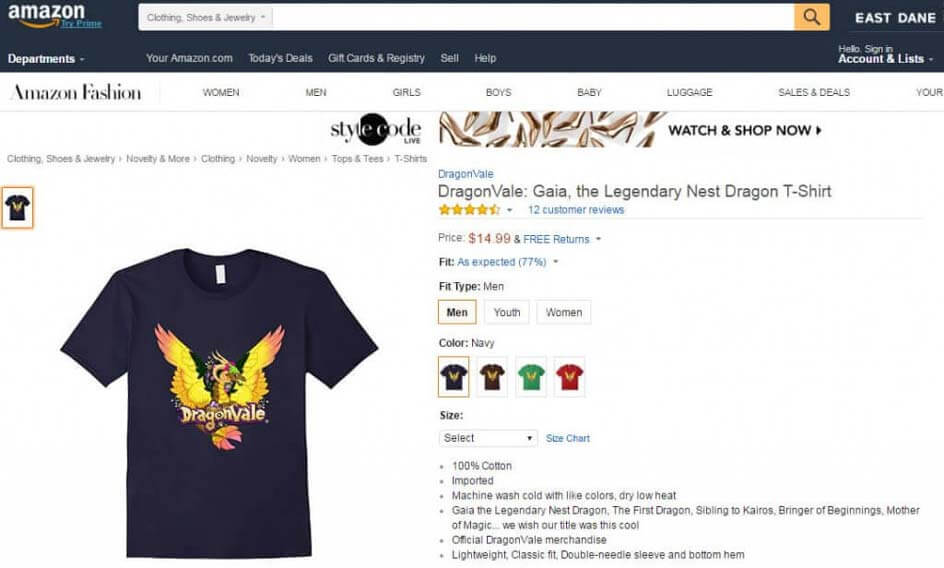
DragonVale game developers used Merch by Amazon service to create and sell.
Downside: You need to generate a large audience of users and sell something people want to buy.
Collecting and Selling Data
Well, this is probably not the most widespread and ethical way of app monetization (and that's great), but collecting and selling personal data still remains one of the effective approaches to turn a profit. Some companies that offer free mobile apps sell their databases to third parties. The information may contain user's email address, social media accounts, and personal preferences. Apps generate a lot of data in terms of user behavior, which is highly desired by those who are in different research fields.
So app developers can sell this kind of information to the researchers and make quite a good return of money. Actually, there are two ways to earn on selling data: track what users do and sell data to outside companies or use the raw data itself for your own purposes.
From a marketing point of view, companies want to pay to display ads to the most relevant audience possible; while on the flip side, far not each service can gather the same data as Facebook or Google does. Nevertheless, if your app is able to gather relevant data, then you may have a way to profit from it.
Downside: the worst of the apps can even infiltrate the call history and contact lists or access users' social media accounts. The good thing is that there are anti-surveillance tools that can help you protect yourself from spying (e.g. Text Secure, Red Phone, Onion Browser, Orbot, etc.).
Affiliate Income and Referral Marketing (from CPA to CPI)
Developers can promote and sell affiliates' services or products for the revenue split based on a number of installs and clicks. You can use pop-ups or banners to promote someone else's apps or use 'in-app store' to advertise product or services.
Amazon store is the best example to illustrate how large the affiliate marketing can be. Just pick up a product to advertise to your app users, get revenue from all qualifying purchases and through advertising fees.
Cost Per Action, cost per acquisition (CPA) networks
There is also a number of affiliate networks, that will help you to find the affiliate that suits your own mobile application. The networks are generally based on cost-per-action (CPA model) or sharing revenue generated for advertisers.
There are several ways to use this app monetization model.
- Promoting other apps
- Advertising products through pop-ups or banners
- Promoting products through an 'in-app store'
Cost-per-mille or cost-per-impressions (CPM) – is a payment model based on a number of impressions. The advertiser is charged each 1,000 time the affiliate ad is displayed (mille is a Latin translation for thousand). iOS ads are generally more Affiliate expensive than ads displayed on Android devices and can differ up to 30% over the platform.
The average mobile revenue per thousand impressions (RPMs):
- Banners: iOS ($1.20 – $3.00) vs Android ($1.15 – $2.50)
- Interstitials: iOS ($4.00 – $6.00) vs Android ($3.00 – $4.00)
The highest end of CPM rates belongs to AdMob network operated by Google. As of July 2016, the CPM rate has reached $6 for Android and $10 for iOS per 1,000 mobile ad impressions.
Cost-per-click (CPC) – is a revenue model based on the number of clicks on an ad displayed. Such popular ad networks like Adfonic and Google's AdMob are commonly PPC, providing both text and display advertisements.
Game developer Pink Pointer used native ads to monetize their free puzzle apps. CTA networks helped developers to achieve a 50% increase in Click-through rates (CTR- the number of ad clicks measurement), resulting in higher revenues.
Cost per sale networks (CPS). With CPS revenue model, also known as pay-per-sale, the app developer is charged only after a purchase has been completed. The app publisher gets fixed commission or percentage of the sale. ShareASale, Rakuten Linksh, and Amazon Associates are high paying, secured CPS networks, especially popular among developers.
Cost per view (CPV) – is a type of charging based on the number of video views or ad interactions, such as clicks on banners or call-to-action overlays. Mobile games developer Brighthouse successfully operated Cost per view networks to increase app revenue by 130%. They used video and interstitial ads inside their app White Tiles 4 to create natural breaks in between game sessions.
Cost per install networks (CPI) – is a type of app monetization equivalent to cost per acquisition used in web marketing. The publisher is paid every time the advertised app is installed by users. There is a number of platforms providing software to install into your app. The fee ranges from $0.80-$3.00, and online affiliate networks have a range of campaigns for global traffic generation while promoting other apps, making it a lucrative market to play.
Rovio used Google AdMob network to increase their Angry Birds downloads among Android users.
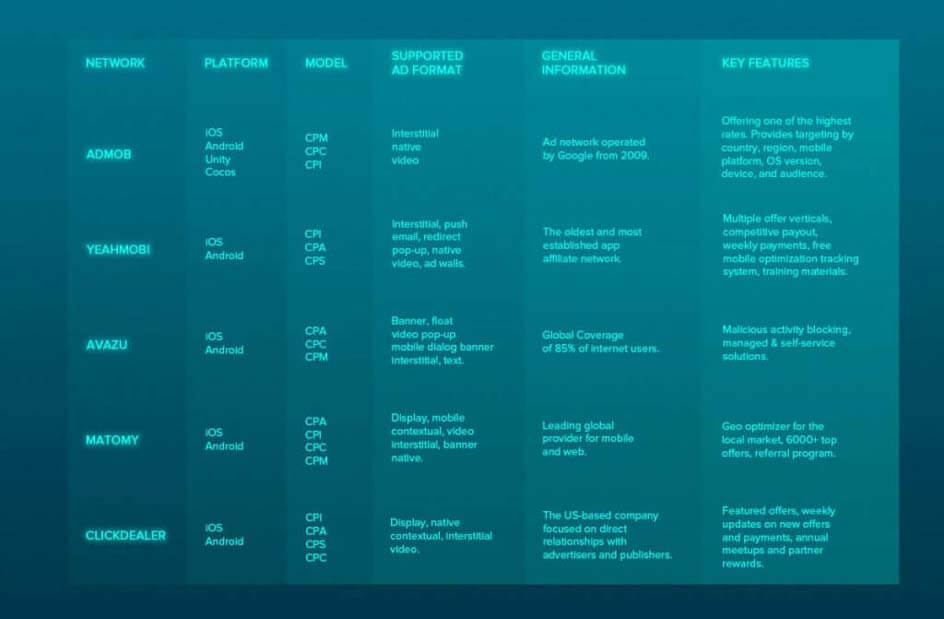
How do apps make money?
Mobile app development can make you rich if you go about it correctly. And if you still worry whether you can make money with a free app, get our experienced "yes-reply" straight away! Top 25% of iOS developers and Top 16% of Android developers make over $5,000 per month with their free apps.
Using the above numbers as a rough guide, we can state that nearly 20 percent of applications on the market are very good, 30 percent of apps are fine and the half of all apps are an actual rubbish, that's sometimes not even worth your attention.
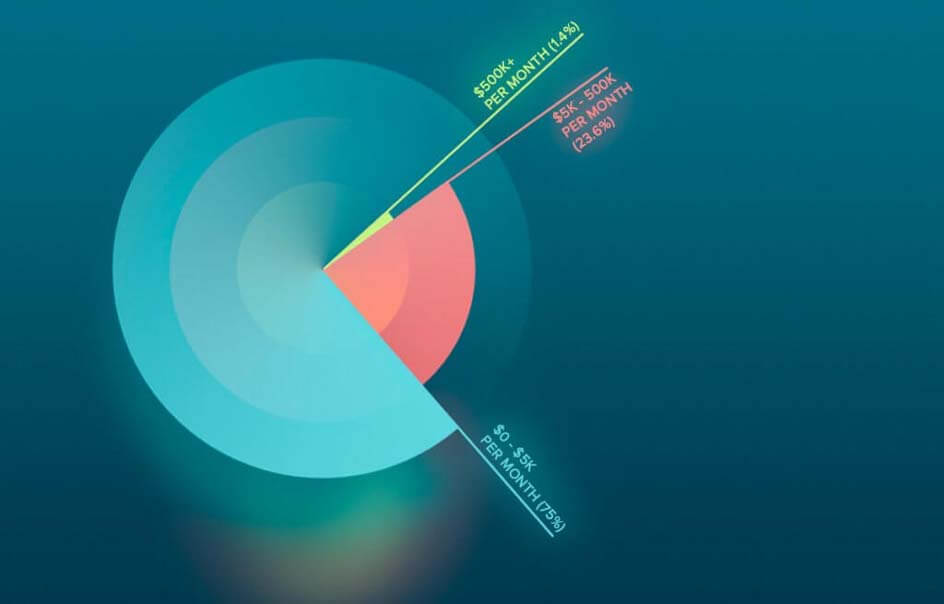
And if you are in the top 20% with your perfectly coded high-quality app, there is no other chance but to get rich with a good monetization strategy afterwards. It goes without saying that if you wish to see your app in the first lines of the chart, you need to know how to make an app and how to monetize your app.
We also selected for you an interesting video about mobile app developing. Here you can see "How to Make an App – Secrets Top Developers Use to Gain Millions". We are sure that this video will bring you a lots of ideas how to make your own app. Let's enjoy!
Making an app is a bit different topic, but you can still get some hints via our Takeaway Secret Tips down below or contact us for more information.
So for now, let's discover how much money can you make with your free app! Let's start with the difference between paid only and freemium services. The graphic is shown in terms of Google searches.
Freemium vs Premium app search
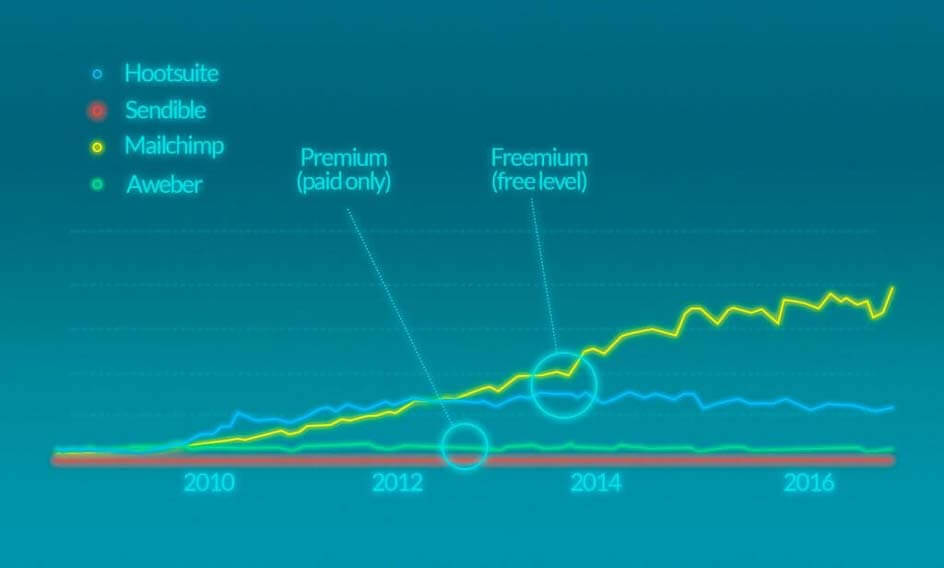
And then take a look at the app categories that make the best profit. As you can see, Games are making more money. Nevertheless, you should consider that these numbers are just averages, and some apps are much more profitable than games.
Top grossing apps by category till 2018
The other factor to pay attention at is a Platform to use while creating an app. Let's take a benchmark of earning in a $5k per app per month, which is below the average employed developer salary in the US and Western Europe, meanwhile in some countries it equals a salary of a whole team.

The highest revenue model (when benchmark of earning is still $5k per app per month) is per device royalties or licensing fees. Although, this might be a very desirable revenue source, important to understand that it's not available to all apps. Meanwhile models like affiliate and CPI programs are often harder to implement, but this research shows the effort is likely to be worth it.
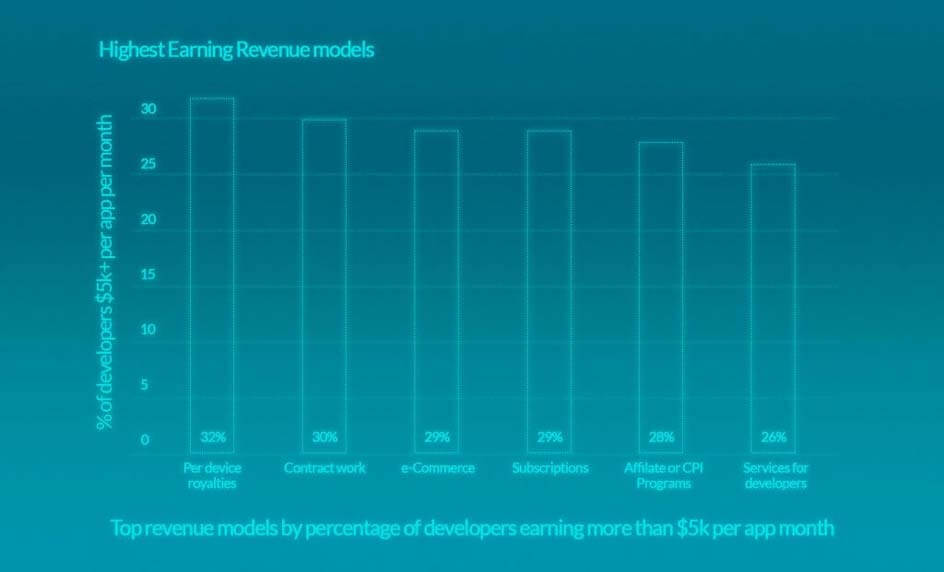
The most intriguing are the last two bottom end revenue models. The difference between them is only 1%. So what's better: paid downloads or free apps with in-app purchases? Just take a look at the top grossing iPhone mobile gaming apps in the US as of January 2017, by Statista.
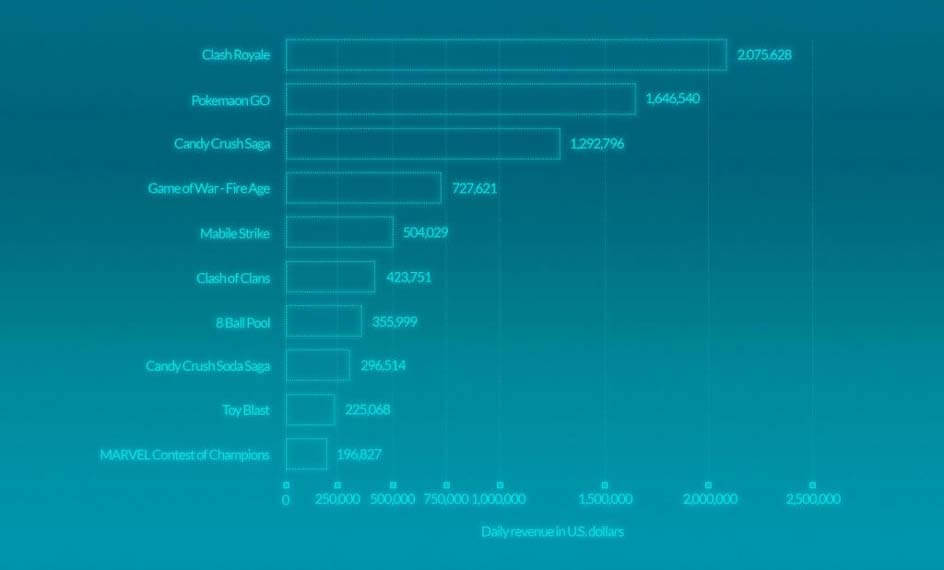
Actually, there are numerous ways you can target your apps and select the revenue model. And to increase your chances of financial success, take a look at the best tools to help you monetize your free app.
Nowadays, when you say that the app is "free", it can only mean that it's free to download. But there is always a way for free apps to make a good money. Take a look at the best tools that offer multiple ways to turn your free app in a source of income.
In-App Advertising Monetization Tools
When it comes to in-app advertising tools the first thing you will face is finding an ad network. So: The first to mention is Google's AdMob, that lets users use Google Analytics to better understand the audience, improve their advertisements, and gain new customers/consumers.
InMobi is a tool that helps you focus on creating better UX. It is more visually appealing than the majority of ad platforms. InMobi allows users to leave feedbacks about the ads, and, consequently, increase the value of targeting for the advertisers.
Facebook's app advertising system offers to display its advertising inside of your app, making targeting more exact and conceivably better for revenue. Apple does also have their own ad tool for apps, which integrates the desired ads into your app and into one platform.
Among other popular and effective in-app advertising app monetization tools that work best for free apps are Amazon's ad system (that still pays per impression), an automation tool with predictive analytics Tapjoy, Appsfire that tries to choose ads that blend best with the apps design, StartApp (that prioritizes ads and increases click-through rates), etc.
In-App Advertising for Game Applications
Considering the fact that game apps are one of the most popular app categories these days, some ads systems are keen specifically for them. So, the list of in-app advertising for game applications starts with Unity, as it's completely focused on games and targets ads only for gamers. In a word, the tool allows monetizing apps entire player base with ease.
NativeX delivers great no lag video together with some pretty nice ad units. Chartboost is the biggest mobile games-only ad network, that offers free cross sales and a Direct Deals Marketplace making game app monetization and user acquisition easy and successful.
Freemium Model of App Monetization
If you prefer to get users enjoy your app for free rather than make them see your ads, there are also tools that can help you improve UX and support the freemium model of app monetization. In case you have your app developed with no digital storefront integrated into the code, you'll find these tools useful:
Android takes care of their developers and offers its own solution to freemium called Androids In-App Billing tool. Meanwhile Apple also has its native system that offers users to purchase your in-app content or subscriptions. But shows it as a software download from the store. Well, yes, it takes 30% of the revenue but manages the transaction instead.
If you are looking for a simple digital storefront tool that allows in-app purchases, Swarm is there to help. It unlocks additional features that are not available on initial free downloaded version. While in case you prefer to combine ads and freemium model in your system, try out AdWorkMedia. It implements various app monetization tools at your disposal.
In-App Video Advertising
Another type of tools worth mentioning works with in-app video ads. Well, video ads may suit your app. It is a fact. Specifically, if they reflect an expected type of content. The following tools may easily help you monetize your free app:
Inneractive combines innovative ad units with perfect reporting and analytics. This allows to monetize mobile apps without actually sacrificing UX. At the same time, YuMe is also on the list. It uses PQI, a proprietary real-time inventory grading algorithm to bring campaigns the best inventory.
Meanwhile Adcolony is there to use their Instant Play HD technology combined with a buffer-free video playback, Vungle is the only one who features SDK suitable for iOS, Android, and Windows. At least they say so.
Conclusion
There are a lot of effective ways to monetize free apps, but it will take some planning and well-rounded marketing strategy. Advertising is still holding the leading position as app monetization method, with 65% of all apps on the market. (Source: Sweetpricing report). Still, developers use app monetization mix: in-app purchases and ads.
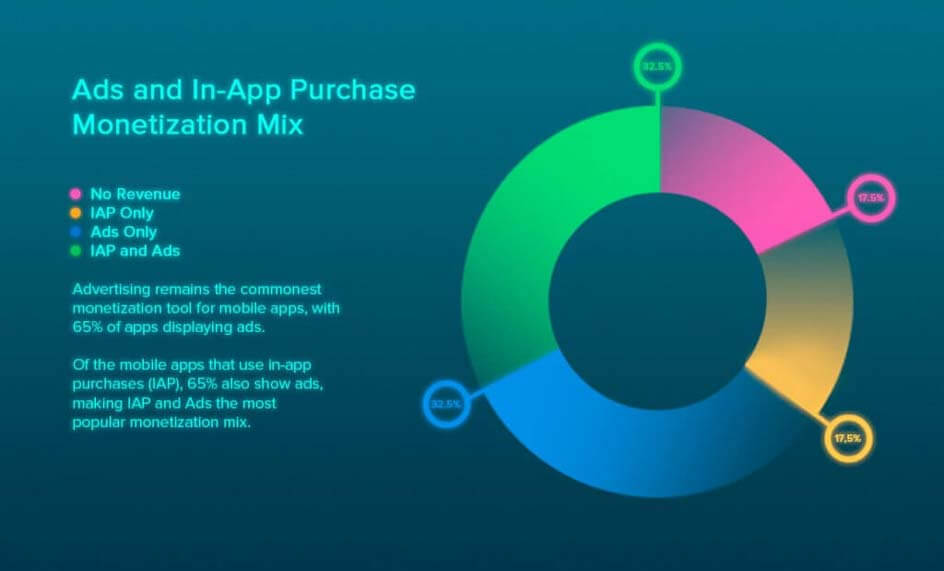
App publishers should do a market research, define target users, check other app developers success stories. The main challenge is to get awareness, acquire loyal users and choose the right revenue model. Developers should plan more targeted ad campaigns to promote the app and its releases, constantly provide updates on features, use more blended and unique revenue models to deliver value to users. This will lead to greater profits and help keep your customers satisfied.
Feel free to contact us viajane.todavchych@thinkmobiles.com if you want to place your company here.
How Does Ad Revenue Work On Apps
Source: https://thinkmobiles.com/blog/how-do-free-apps-make-money/
Posted by: smiththeyet.blogspot.com

0 Response to "How Does Ad Revenue Work On Apps"
Post a Comment